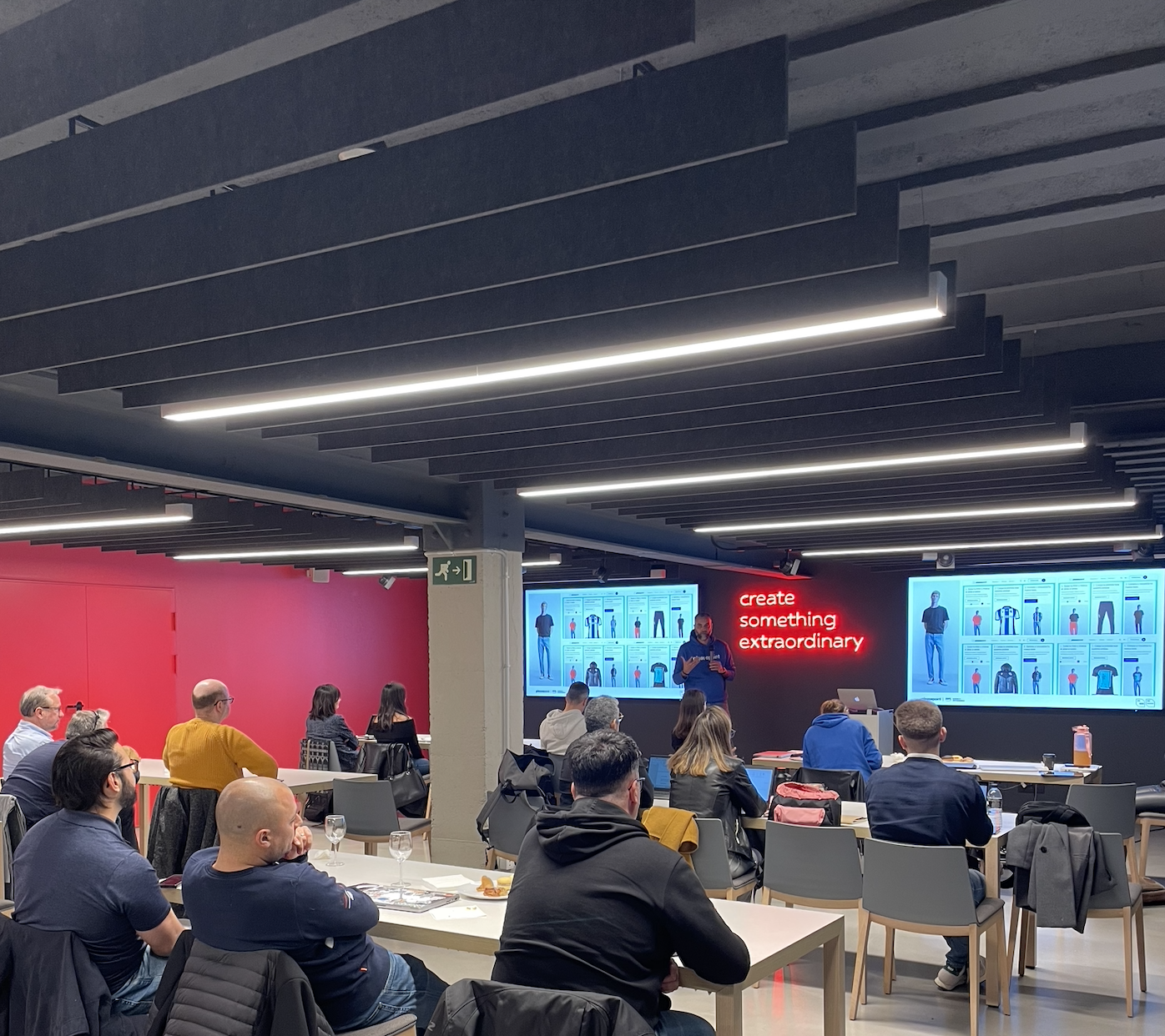
Enhancing Salesforce Marketing Cloud with the Customer Lifetime Value (CLV) Datamodel.
In this post, we explore how to enrich your Salesforce Marketing Cloud with information from the customer classification model based on consumption patterns and CLV.
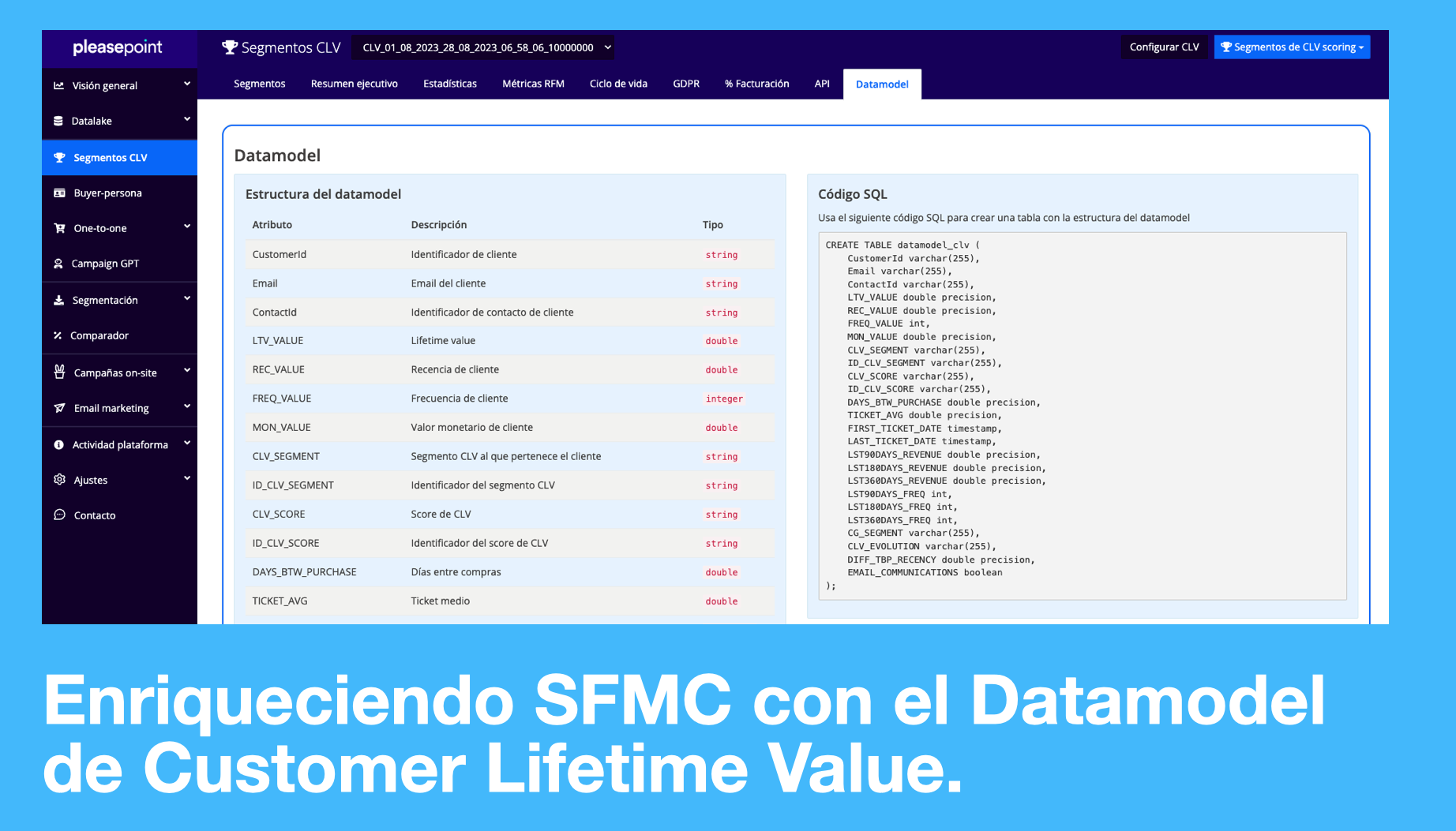
In this article, we will explore in detail how to enrich technological solutions like Salesforce Marketing Cloud and other CRM/CDP or Data Lake systems with information derived from the customer classification model.
These are the article contents:
- What is a Datamodel?
- Customer classification based on Customer Lifetime Value (CLV).
- Structure of the CLV Datamodel.
- Use cases for the CLV Datamodel.
- Examples of customer journeys based on CLV.
- Benefits of using the CLV Datamodel in SFMC.
In the dynamic world of marketing, effective customer relationship management becomes a fundamental pillar of any forward-thinking company’s strategy. In this context, one of the most valuable and revealing concepts is the so-called Customer Lifetime Value (CLV), a metric that serves as a guiding light to estimate how much each customer will contribute to your business's revenue and profitability over time.
We define Customer Lifetime Value (CLV) as an estimate of how much money a customer is likely to spend in your business over time. It helps you identify your most valuable customers and how to keep them happy so they continue purchasing.
It’s like predicting how much money each customer will bring to your store throughout their life as a buyer. CLV not only sheds light on the financial value an individual customer can provide, but also serves as a tool for understanding the relationship between the company and its customer base.
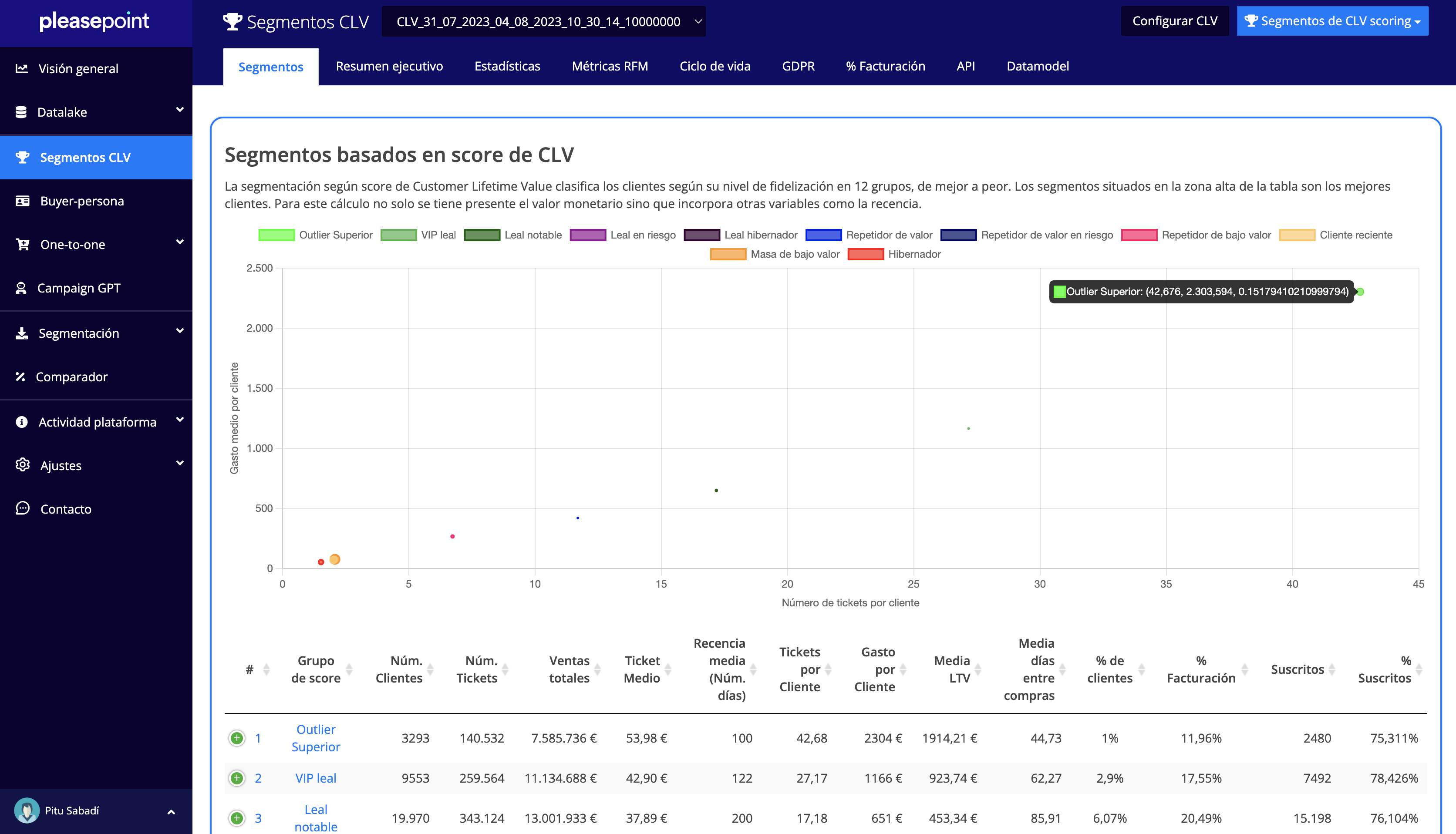
This model, based on consumption patterns and CLV, allows us to gain a deeper understanding of customer behavior and opens the doors to marketing strategies aimed at fostering loyalty and maximizing each customer’s value to the organization.
This is where your journey into mastering predictive marketing gains immense value. We invite you to dive deep into the gears of this knowledge machine, challenge your concepts, and take your understanding of CLV and data enrichment to the next level.
This article is your compass in a sea of possibilities, guiding you toward smarter strategies and more informed decisions. Get ready to unlock all the potential predictive marketing and CLV have in store for you!
I also want to share with you five previous blog articles that I believe will be of interest to you:
- Tips for creating a profitable customer loyalty club.
- Configuring the machine learning model for your segmentation strategy based on CLV.
- The control group, the key to measuring the impact of your CRM actions.
- One-to-one personalization for your actions in Salesforce Marketing Cloud.
- Pleasepoint selected at the AWS Summit Madrid 2023 as one of the 20 most innovative startups.
What is a Datamodel?
In the Pleasepoint ecosystem, Datamodels are automatically generated CSV files that allow you to export and act on the results generated by our artificial intelligence models.
These data files, as their name suggests, encapsulate a massive wealth of information about your customers, allowing you to gain a detailed and revealing perspective on their consumption patterns and behaviors.
Within this set, the Customer Lifetime Value (CLV) Datamodel stands out as a particularly valuable gem.
You can see the full structure of the data model in the Datamodel tab of the Segmentation based on Customer Lifetime Value module.
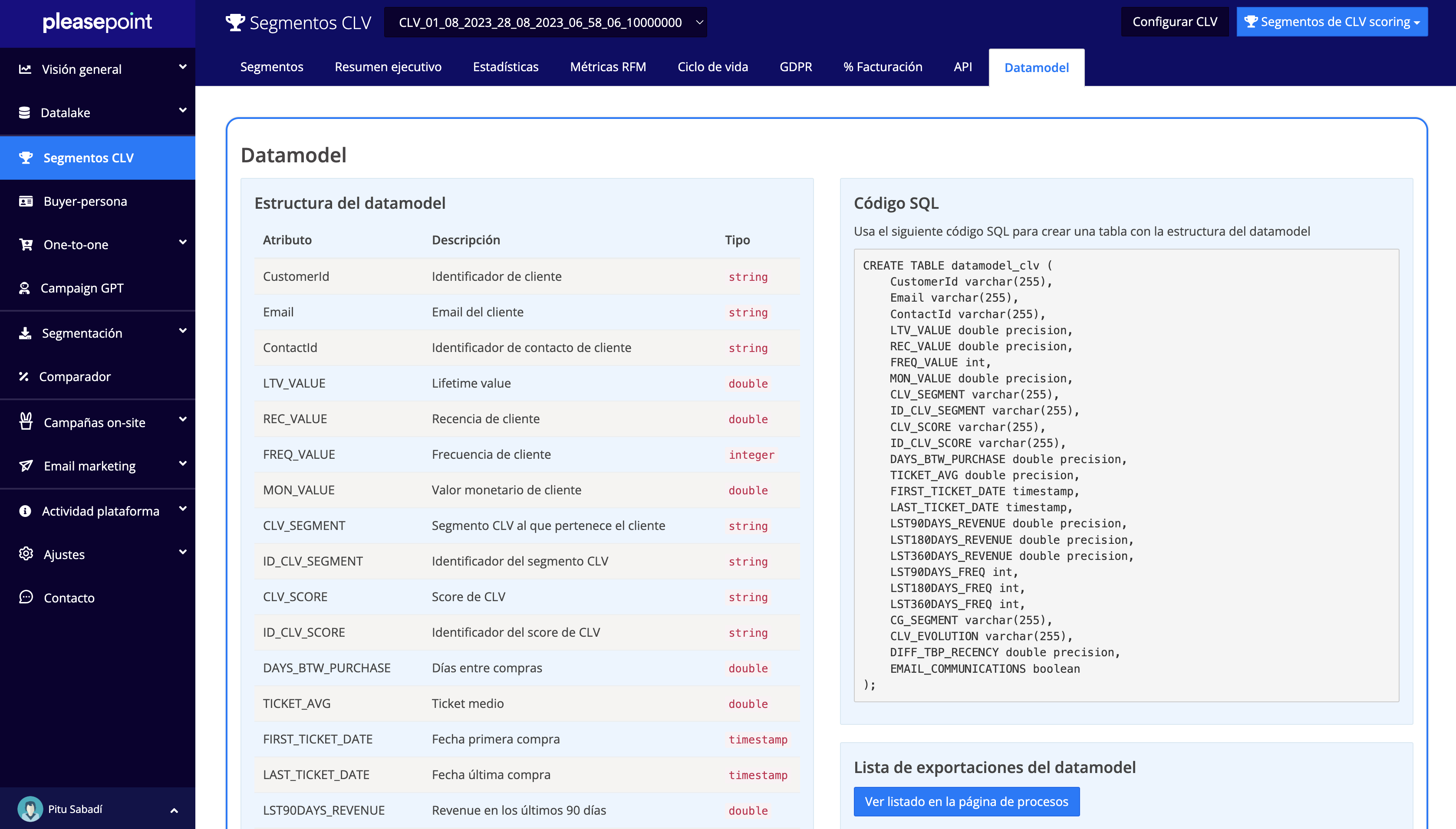
This file is a direct window into the heart of your customers' loyalty status. Within its rows and columns reside attributes that go beyond just the monetary value of each customer: lifetime value, the number of days since the last purchase, the total number of purchases, the days between purchases, and other crucial aspects that combine to paint a complete picture of each customer.
In this system enrichment process, understanding the CLV Datamodel becomes essential. Each attribute enhances your understanding of your customers.
What better way to approach marketing strategies than with a clear and detailed picture of each individual?
The Datamodel thus becomes your compass for segmentation, personalization, and informed decision-making. From identifying your most valuable customers to predicting their future behavior, this file shines like a beacon in the dark sea of data, guiding you toward creating truly impactful loyalty strategies.
Remember, to use the Pleasepoint Data model with Salesforce Marketing Cloud, you must first configure sFTP access to the platform.

Once the sFTP is properly configured, you’ll have access to the automated generation of massive data exports for each customer in the Segmentation based on Customer Lifetime Value section.
In the article One-to-one personalization for your actions in Salesforce Marketing Cloud, you’ll see how to import the one-to-one product recommendation Datamodel into Salesforce Marketing Cloud using our deep learning engine to offer each customer the best products at any given time.
Customer classification based on Customer Lifetime Value.
Customer classification based on Customer Lifetime Value (CLV) is a powerful strategy that sheds light on the relationship between your customers and your business. The Datamodels from Pleasepoint, born from the results of our artificial intelligence models, become detailed maps that guide you through the various levels of customer loyalty.
Like a master in the art of segmentation, the CLV Datamodel provides you with a precise lens to discern the nuances in consumption patterns, behaviors, and interactions that define your customers.
On this journey of CLV-based classification, the possibilities multiply. Each segment that emerges from the data tells a unique story about your customers. From the "Top Outliers," those setting the standard in value and frequency, to the "Inactive," who awaken a call for reactivation, each group represents a chapter in the narrative of your customer relationships.
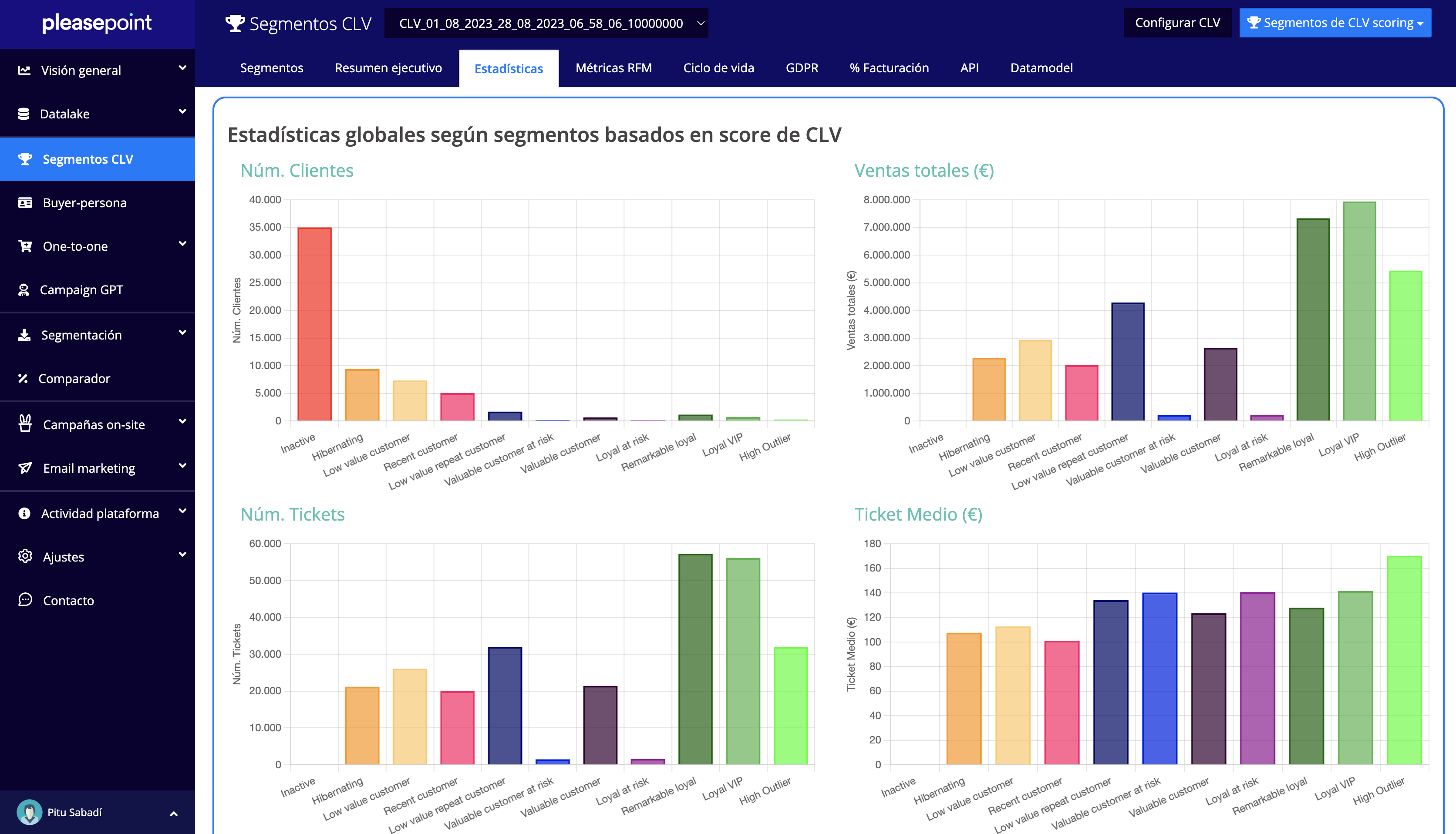
The numbers and statistics paint an eloquent picture of the dynamics of your customer base: from the number of customers and their purchasing patterns to their monetary value and lifecycle.
Take, for example, the "Loyal VIPs" who make a significant contribution to your revenue, and the "Dormant" customers who could be awakened to a more active relationship. This classification not only helps focus your efforts strategically but also allows for the design of personalized marketing campaigns that cater specifically to the needs of each segment.
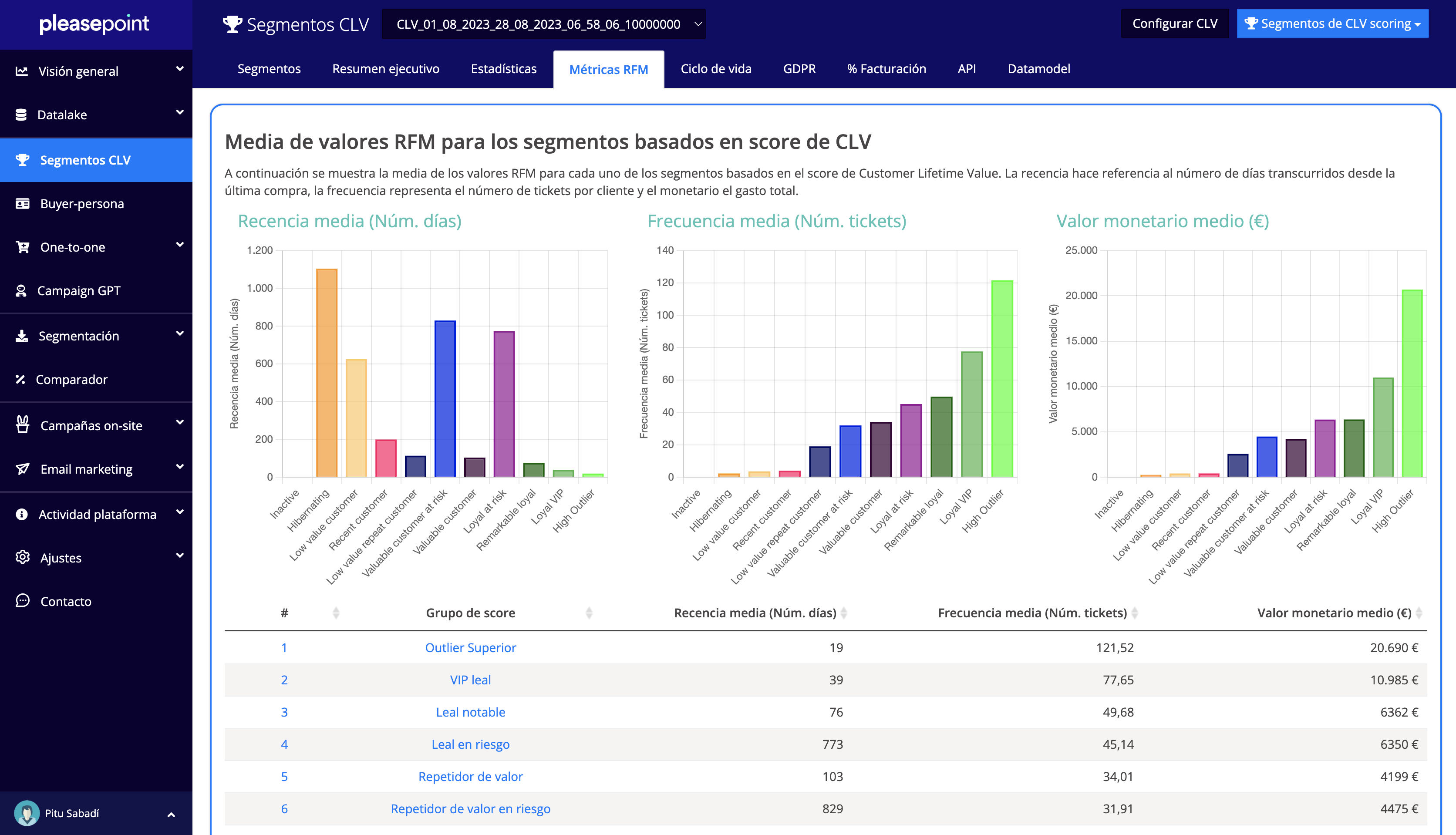
The CLV Datamodel becomes a beacon in the sea of data, guiding you to improve loyalty, giving you the opportunity to build strategies that nurture and maximize the value of each of your customers.
Here is a table showing the information for each CLV segment, its description, and the recommended marketing objectives for each:
| Segment Name | Segment Description | Marketing Objective |
|---|---|---|
| Top Outlier | Customers with the highest lifetime value, significantly contributing to revenue. | Create exclusive loyalty programs, VIP rewards, and personalized offers. |
| Loyal VIP | Highly loyal and valuable customers who continue to contribute positively. | Encourage retention, drive additional sales, and promote positive word-of-mouth. |
| Notable Loyal | Loyal customers with consistent value who deserve attention to maintain their commitment. | Offer incentives to increase purchase frequency and monetary value. |
| Loyal at Risk | Customers who have shown signs of declining value but still have potential. | Implement reactivation strategies, renewal campaigns, and rewards to regain their loyalty. |
| Value Repeater | Customers with consistent purchases and solid value, but less frequent than loyal customers. | Stimulate repeat purchases with personalized offers and relevant content. |
| Value Repeater at Risk | Customers similar to value repeaters but showing signs of decline. | Implement retention measures, reactivation campaigns, and reminders to maintain their interest. |
| Low-Value Repeater | Customers who buy regularly but with lower value, needing incentives to increase their value. | Promote cross-selling and up-selling offers to increase their spending. |
| Recent Customer | New customers who need nurturing and attention to become loyal. | Send personalized welcomes, recommendations based on their first purchase, and discounts to encourage engagement. |
| Low-Value Mass | Customers who make frequent purchases but at a low value, a large group with potential. | Create incentive programs to increase per-purchase spending and frequency. |
| Dormant | Customers who have shown a significant decrease in interaction, needing reactivation. | Send exclusive offers, personalized reminders, and campaigns to reignite their interest. |
| Inactive | Customers who have stopped interacting and purchasing, representing a reactivation opportunity. | Implement re-engagement strategies, offer incentives to return, and remind them of the benefits of your brand. |
Incorporating the Customer Lifetime Value (CLV) Datamodel into your CRM strategy offers compelling reasons to start right away.
This essential resource allows you to delve deep into your customer relationships and understand how each will contribute to your revenue over time. By leveraging it, you can develop a highly personalized marketing approach that reflects the uniqueness of each customer.
Structure of the CLV Datamodel.
The Customer Lifetime Value (CLV) Datamodel presents a carefully designed structure to store crucial information about your customers. With attributes like Lifetime Value, Recency, Frequency, and Monetary Value, this model provides precise data essential for effectively segmenting your customers.
It also includes fundamental elements like the CLV Segment, CLV Score, and CLV Segment Evolution, which are cornerstones for building personalized and successful strategies.
Here is the detailed structure of the CLV Datamodel:
| Attribute | Description | Type |
|---|---|---|
| CustomerId | Customer identifier | string |
| Customer's email | string | |
| ContactId | Customer contact identifier | string |
| LTV_VALUE | Lifetime value | double |
| REC_VALUE | Customer recency | double |
| FREQ_VALUE | Customer frequency | integer |
| MON_VALUE | Customer monetary value | double |
| CLV_SEGMENT | CLV segment to which the customer belongs | string |
| ID_CLV_SEGMENT | CLV segment identifier | string |
| CLV_SCORE | CLV score | string |
| ID_CLV_SCORE | CLV score identifier | string |
| DAYS_BTW_PURCHASE | Days between purchases | double |
| TICKET_AVG | Average ticket | double |
| FIRST_TICKET_DATE | First purchase date | timestamp |
| LAST_TICKET_DATE | Last purchase date | timestamp |
| LST90DAYS_REVENUE | Revenue in the last 90 days | double |
| LST180DAYS_REVENUE | Revenue in the last 180 days | double |
| LST360DAYS_REVENUE | Revenue in the last 360 days | double |
| LST90DAYS_FREQ | Frequency in the last 90 days | integer |
| LST180DAYS_FREQ | Frequency in the last 180 days | integer |
| LST360DAYS_FREQ | Frequency in the last 360 days | integer |
| CG_SEGMENT | Control group segment | string |
| CLV_EVOLUTION | CLV segment evolution: up, down, equal or new | string |
| DIFF_TBP_RECENCY | Difference between TBP and recency | double |
| EMAIL_COMMUNICATIONS | Email communications activated | boolean |
Each of these attributes plays a crucial role in building a detailed and precise picture of your customers, allowing you to make informed decisions and execute highly personalized marketing strategies.
The depth and variety of information contained in this Datamodel is an invaluable tool for optimizing your tactics and maximizing the value of your customer base.
This CLV Datamodel, automatically generated from the results of artificial intelligence models, presents itself as a data file containing valuable and detailed information about your customers. Through attributes such as Lifetime Value, Recency, Frequency, and Monetary Value, you can effectively segment your customers and understand their behaviors and preferences.
Configuring the CLV Datamodel from Pleasepoint.
Once you’ve configured the connection to the Salesforce Marketing Cloud sFTP, you can deploy the CLV Datamodel in the model's settings. Remember, you can access the settings with the button located in the upper right corner.
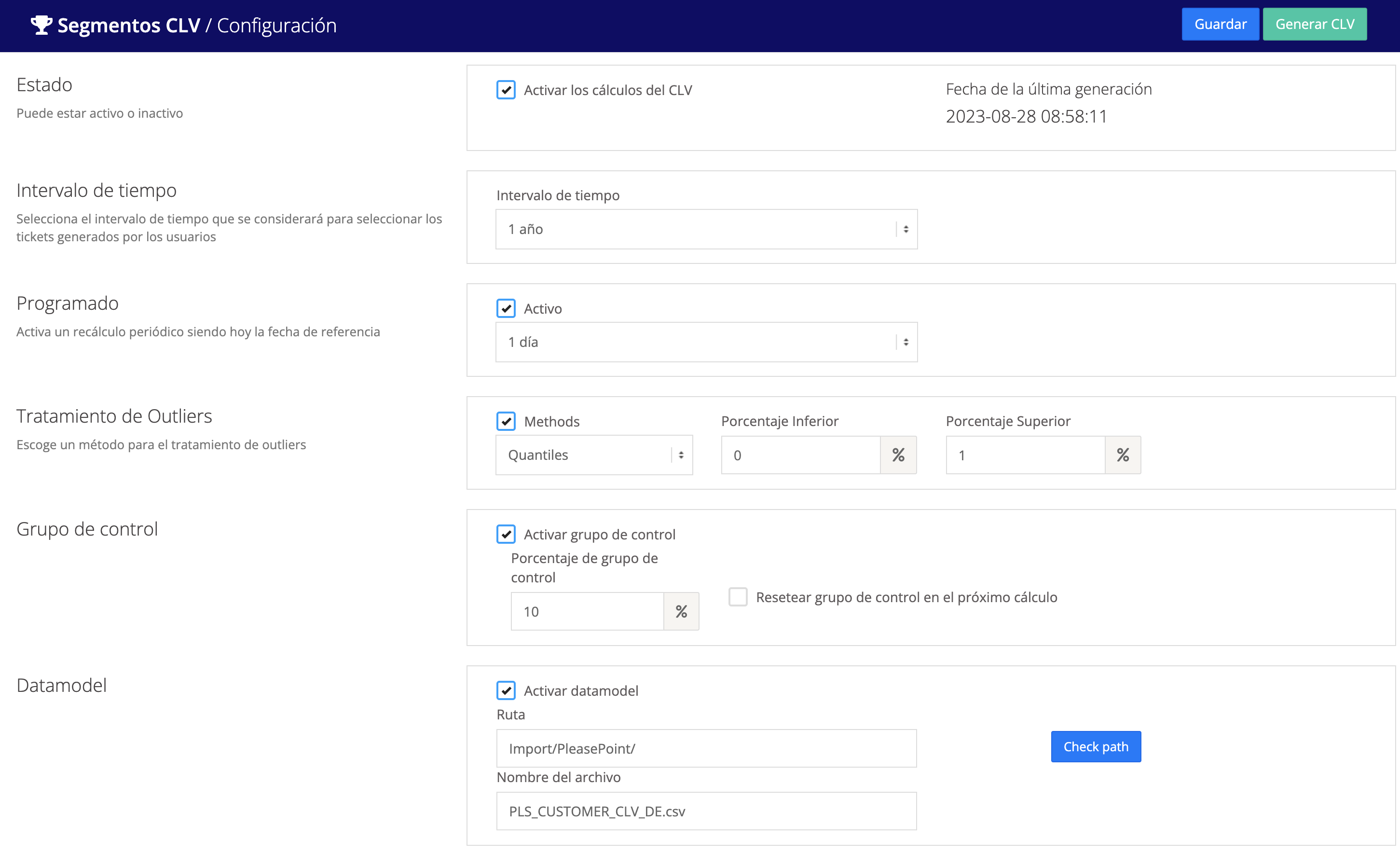
To configure the Datamodel, follow these steps:
- Activate CLV calculations and select the time interval.
- Activate scheduled calculations with the desired calculation frequency.
- Configure the control group to measure results.
- Activate Datamodel generation, select the path to generate the file, and its name.
Remember to save and regenerate the CLV using the two buttons located in the upper right corner.
I’m sharing links to two blog articles that I think will interest you:
- The control group, the key to measuring the impact of your CRM actions to learn how to measure your actions' results using a control group with Pleasepoint.
- Configuring the machine learning model for your segmentation strategy based on CLV to see how to configure and use the Artificial Intelligence model to classify customers by loyalty status.
SQL structure of the CLV Datamodel from Pleasepoint.
In the Datamodel tab located in the main view of the CLV-based Segments module, you will find the table structure in SQL so that you can use it in your customer data storage systems.

If you want to bulk import your CLV data into your Salesforce Marketing Cloud, you must follow these steps:
- Configure the creation of the CLV Datamodel on Salesforce's sFTP.
- Create a Data Extension with the SQL structure of the CLV Datamodel.
- Set up automation to import Datamodel data into the Data Extension you just created.
It’s that easy. Now, you’ll have this Data Extension updated with the frequency you have configured.
Here is the SQL code you need:
CREATE TABLE datamodel_clv (
CustomerId varchar(255),
Email varchar(255),
ContactId varchar(255),
LTV_VALUE double precision,
REC_VALUE double precision,
FREQ_VALUE int,
MON_VALUE double precision,
CLV_SEGMENT varchar(255),
ID_CLV_SEGMENT varchar(255),
CLV_SCORE varchar(255),
ID_CLV_SCORE varchar(255),
DAYS_BTW_PURCHASE double precision,
TICKET_AVG double precision,
FIRST_TICKET_DATE timestamp,
LAST_TICKET_DATE timestamp,
LST90DAYS_REVENUE double precision,
LST180DAYS_REVENUE double precision,
LST360DAYS_REVENUE double precision,
LST90DAYS_FREQ int,
LST180DAYS_FREQ int,
LST360DAYS_FREQ int,
CG_SEGMENT varchar(255),
CLV_EVOLUTION varchar(255),
DIFF_TBP_RECENCY double precision,
EMAIL_COMMUNICATIONS boolean
);
Use cases for the Customer Lifetime Value Datamodel.
The Customer Lifetime Value (CLV) Datamodel not only provides deeper insight into your customers, but it also offers valuable opportunities to optimize your marketing strategies.
Let’s explore some key use cases:
- Promotion and Discount Segmentation: Use the CLV Datamodel to segment your promotions and discounts more strategically. By knowing each customer's loyalty level, you can offer personalized deals that align with their purchasing patterns and behavior.
- Personalized Communication: Leverage the Datamodel to create specific and relevant communications for each loyalty level. Tailoring your messages to your customers' preferences and buying habits will increase the effectiveness of your campaigns and improve customer relationships.
- Automated Journeys: Design automated journeys that address customer dormancy. The Datamodel provides insights into the recency and frequency of purchases, allowing you to create communication flows designed to reactivate customers at risk of inactivity.
- Targeted Actions for Inactive Customers: Identify inactive customers using the Datamodel and take specific actions to reactivate them. You can send exclusive offers, personalized reminders, or special incentives to encourage them to re-engage with your brand.
- Loyalty and Reward Programs: Recognize and reward your most valuable customers through reward programs. Use the Datamodel to identify high-value customers and design loyalty programs that encourage them to continue buying and remain committed to your business.
A key advantage of the CLV Datamodel is its ability to classify customers into different segments based on their level of loyalty and value. This approach allows you to tailor your messages and strategies to the unique expectations and needs of each group.
This personalization increases the relevance of your communications and, ultimately, improves your results.
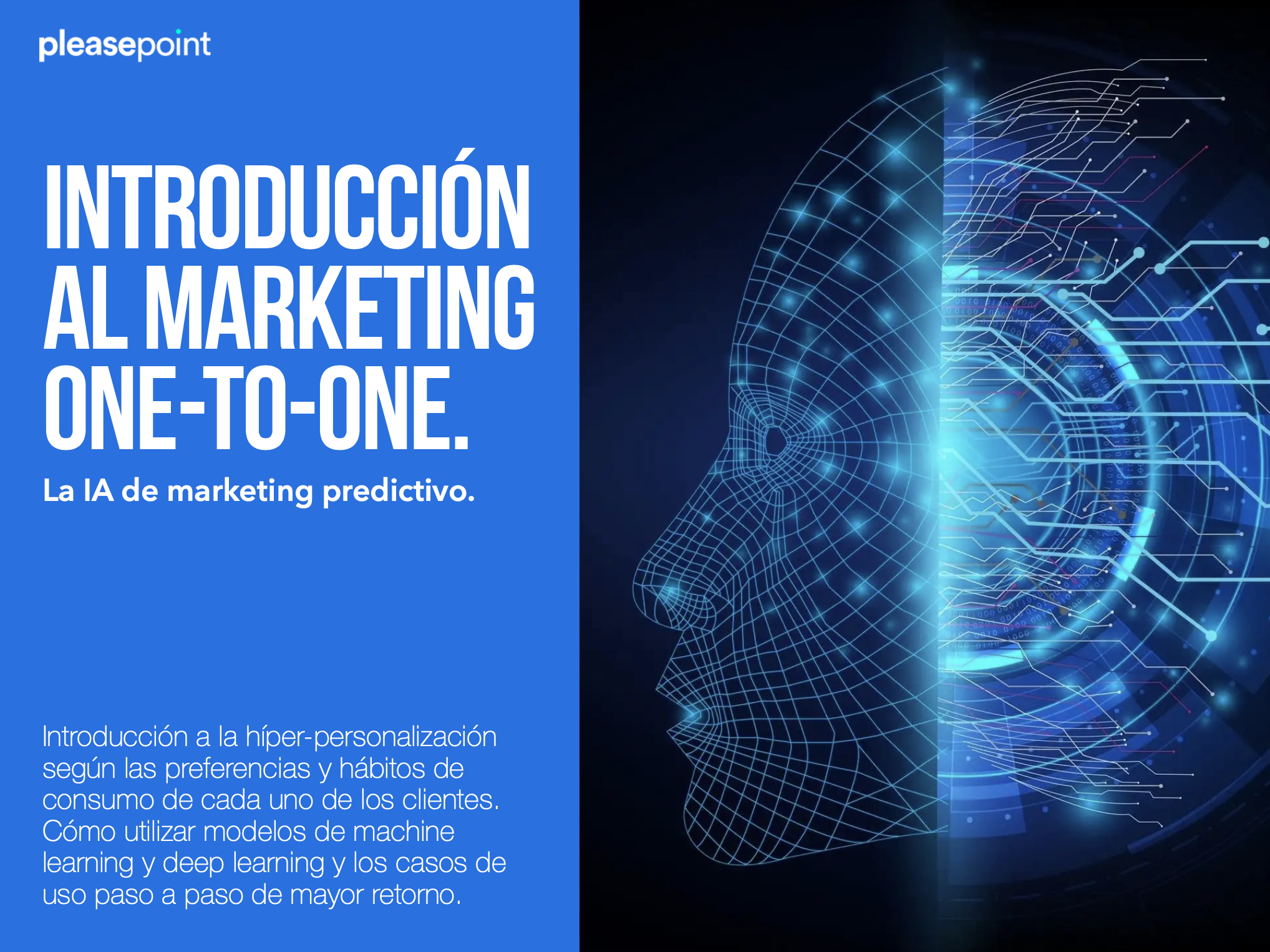
Download our eBook Introduction to one-to-one marketing and learn how to hyper-personalize your communication strategy and real-time interaction for each of your customers, increasing your sales conversion rate.
In addition to segmentation, this approach is especially valuable for improving retention. By knowing your customers’ buying patterns and lifecycles, you can anticipate and address inactivity by implementing preventative actions such as personalized communications and exclusive offers. This helps retain your valuable customers and avoid losing their business.
This data-driven and strategic approach will be the catalyst that drives sustainable growth for your business in a competitive market.
Examples of customer journeys based on CLV.
Understanding each customer's state makes it easy to create automated communications aimed at improving repeat purchases and increasing customer loyalty.
By fully understanding the characteristics and preferences of each segment, you can tailor your marketing strategies precisely and effectively, leading to tangible advantages.
By targeting each segment with personalized and relevant messages, you increase the likelihood that customers will perceive the real value of your products or services. This creates a deeper and more genuine connection with the brand, which in turn drives repeat purchases by keeping them engaged and satisfied.
Furthermore, by focusing on offering exactly what they need and want, you reduce the likelihood they will seek alternatives elsewhere.
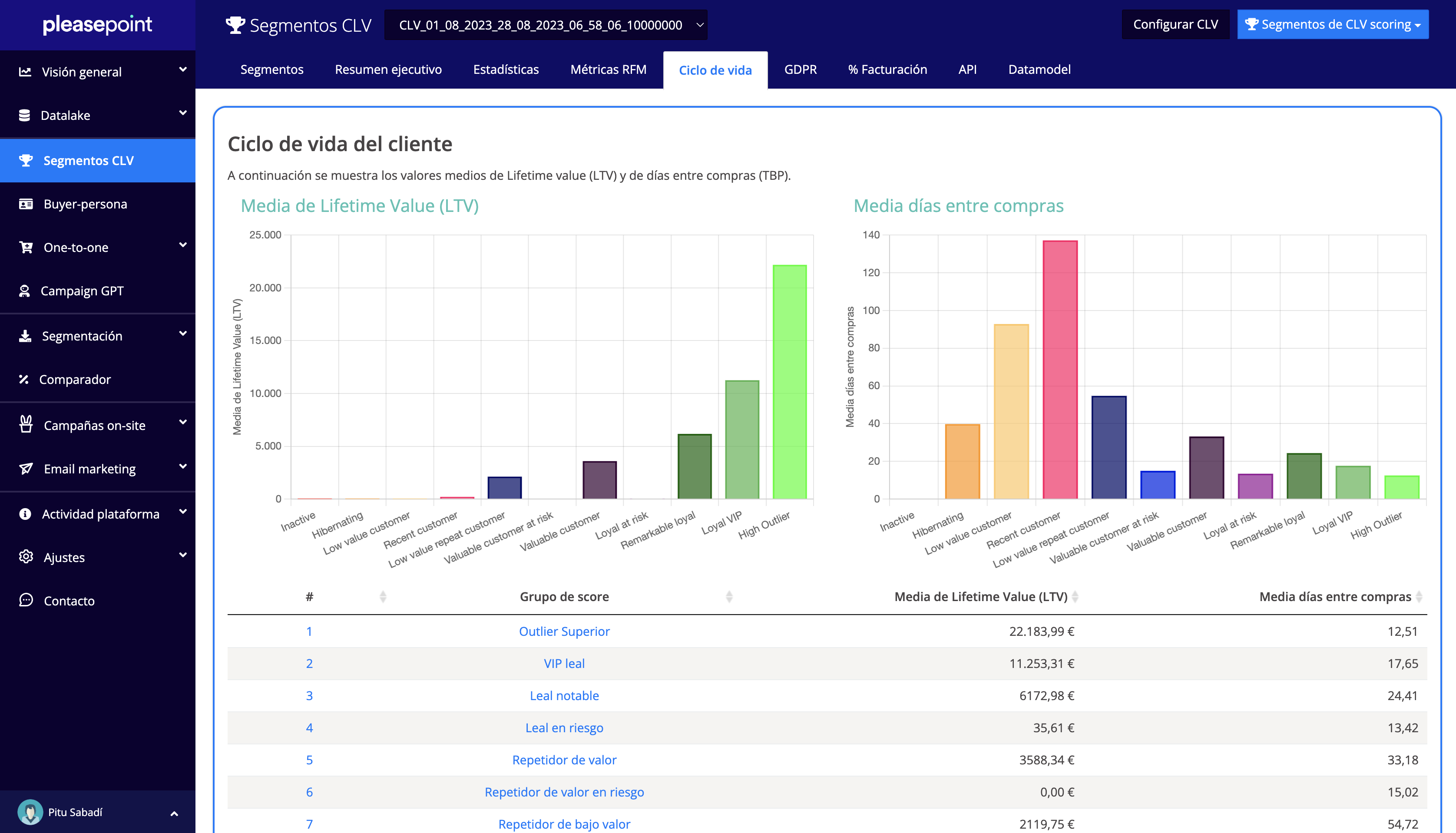
Another notable benefit is optimizing the purchase cycle for each segment. By analyzing their past behaviors and buying habits, you can establish customer journeys that strengthen their relationship with the brand at key moments.
This could include offering incentives or discounts at the right time to drive repeat purchases, adjusting the communication frequency to maintain a balance between reminders and oversaturation, and suggesting complementary products to increase the value of each transaction.
Ultimately, these refined approaches contribute to creating a smoother and more engaging customer journey, which in turn increases the likelihood they will return for future purchases.
We’re sharing the best examples of customer journeys you can activate in your Salesforce Marketing Cloud based on the CLV Datamodel. These customer journey examples are designed to maintain and reactivate different customer segments based on their value and behavior.
1. Customer journeys for Top Outliers.
This segment includes the very best customers. Here are three examples of journeys you can activate for them:
- VIP Welcome: Send a personalized welcome email with a special gift and exclusive access to promotions.
- Exclusive Event Invitation: Notify them about VIP events and provide registration details.
- Satisfaction Surveys: Request feedback on their experience to further improve their satisfaction.
2. Customer journeys for Loyal VIPs.
These are highly loyal and high-value customers. Here are some examples of automated communications you can send:
- Rewards Program: Send reward points for every purchase to be redeemed in future purchases.
- Exclusive Content: Send exclusive content, such as blogs or videos, that add value to their purchases.
- Early Access: Send early access to flash sales and new collections.
3. Notable Loyal (Mid-value loyal customers).
This group includes some of the best customers overall, but with mid-level value compared to the most loyal. Check out these ideal journey examples for them!
- Personalized Offers: Send offers based on their purchase history to drive new acquisitions.
- Brand Communications: Send emails that tell the brand’s story and its commitment to quality.
- Satisfaction Surveys: Send periodic surveys to measure their satisfaction and suggest improvements.
4. Loyal at Risk.
This group includes loyal customers who are starting to show less activity. Now is the time to reactivate them, and we recommend these journeys for that purpose:
- Reactivation Offers: Send exclusive discounts to reignite their interest and increase purchase frequency.
- Content of Interest: Send relevant content that can regain their attention and keep them engaged.
- Opinion Surveys: Send surveys to understand why their activity has declined and how to improve their experience.
5. Value Repeater.
These customers are mid-value and have a high purchase frequency. This is an ideal time to strengthen the relationship with actions tailored to their preferences.
- Product Upselling: Send recommendations for related, higher-value products to increase their average ticket.
- Referral Program: Send invitations to refer friends in exchange for discounts or special offers.
- Product Feedback: Send requests for feedback on the products they’ve recently purchased.
6. Value Repeater at Risk.
Pay attention to this group, as they are mid-value customers whose activity has started to decline significantly. We recommend these journeys:
- Reactivation Offers: Send progressive discounts to encourage new purchases and reignite their interest.
- Content of Interest: Send relevant content that can recapture their attention and motivate their activity.
- Preference Surveys: Send surveys to understand their preferences and personalize future offers.
7. Low-Value Repeater.
This group of customers is particularly interesting because they are still low-value customers but are showing a good repeat purchase pattern. We recommend these journeys to continue building loyalty with these customers:
- Smart Upselling: Send recommendations for complementary products to increase their spending.
- Loyalty Program: Send exclusive offers to join loyalty programs and increase their commitment.
- Service Feedback: Send satisfaction surveys after each purchase to ensure a positive experience.
8. Recent Customer.
This group includes new customers who have recently made their first purchases. You need to strengthen the bond between them and your brand, so we recommend these journeys:
- Satisfaction Survey: Send surveys to measure their satisfaction with their most recent purchase and gather feedback.
- Second Purchase Discount: Send a discount for their second purchase as an incentive to return soon.
- Brand Story: Send an email that tells the brand’s story and mission.
9. Low-Value Mass.
This group is a segment of customers you haven’t been able to retain. These are low-value customers with low frequency and a significant risk of never purchasing again. We recommend these automated actions:
- Reactivation Offers: Send exclusive discounts to motivate their return and increase purchase frequency.
- Educational Content: Send relevant content, such as product usage guides, to increase their engagement.
- Purchase Incentives: Send quantity-based offers to encourage larger purchases and increase their spending.
10. Dormant.
This group of customers has been inactive for a long time, consisting of low-value customers with a high probability of never purchasing again. You need to activate these types of journeys to encourage their recovery:
- Reactivation Program: Send a series of emails with progressive offers to reignite their interest.
- Special Discount: Send an exclusive discount as an incentive to make a new purchase.
- Brand Story: Send emails telling the brand’s evolution and latest developments.
11. Inactive.
This customer segment hasn’t made a purchase within the time frame you’ve configured for the Customer Lifetime Value model. You should activate journeys like these to achieve a first purchase from this group:
- Reminder of Benefits: Send emails reminding them of the benefits of being part of the community and how they can enjoy them again.
- Special Comeback Offers: Send attractive discounts to encourage them to re-engage with the brand.
- Invitation to Update: Send updates and product improvements to reignite their interest and motivate new purchases.
Benefits of using the CLV Datamodel in SFMC.
By integrating the Customer Lifetime Value (CLV) Datamodel into your Salesforce Marketing Cloud (or other CRM platforms, any market CDP, or Data Lake), you’re opening the door to a world of strategic opportunities. The benefits are immense and go beyond simply improving customer retention.
By segmenting your strategies and personalizing your marketing approaches, you’ll be strengthening your customer relationships sustainably.
CLV-based segmentation will allow you to target specific customer groups with messages and offers tailored to their individual needs and preferences. This will increase the relevance of your communications and enhance the customer experience, ultimately boosting customer loyalty and value over time.
Here are 7 benefits of using the customer classification Datamodel based on Customer Lifetime Value:
- Advanced Personalization: The CLV Datamodel provides you with a deep understanding of your customers, allowing you to personalize your strategies and messages based on their behavioral patterns and preferences.
- Precise Segmentation: Knowing each customer’s loyalty level, you can segment your database more effectively and design specific campaigns for each segment.
- Resource Optimization: By focusing your efforts on high-value customers, you optimize your resources and maximize the return on investment in your marketing activities.
- Customer Reactivation: Identifying customers at risk of inactivity allows you to take preventive measures to reactivate them through targeted communications and personalized offers.
- Increased Loyalty: Through reward programs and tailored communications, you can strengthen your customers’ loyalty and keep them engaged with your brand.
- Improved Retention: By understanding your customers' buying cycles and trends, you can implement effective strategies to retain them over time.
- Increased Customer Value: By offering a personalized and relevant experience, you can increase each customer's lifetime value, resulting in higher revenue for your business.
Through the CLV Datamodel, you can chart a strategic path that addresses both high-value customers and those showing signs of inactivity or risk of dormancy. Personalized strategies, such as preventive communications and special offers, will help keep customers engaged and prevent the loss of valuable business.
The use of the CLV Datamodel in your marketing strategies also gives you a deeper and more complete view of your customers. You’ll be able to better understand their purchasing behavior, spending patterns, and frequency, allowing you to fine-tune your tactics and messages more precisely.
In summary, enriching your marketing tools with the CLV Datamodel is a step toward effectiveness and personalization. You’re improving decision-making, increasing customer retention and value, and building a solid foundation for continuous growth. Don’t underestimate the power of this approach, and start transforming your marketing strategies today to reap the benefits in the future.
Download our eBook Enriching customer data and learn how to execute a personalization strategy based on each of your customers' lifecycle and preferences. It has never been easier to start hyper-personalizing and increasing the performance of your marketing actions.
También te puede interesar...
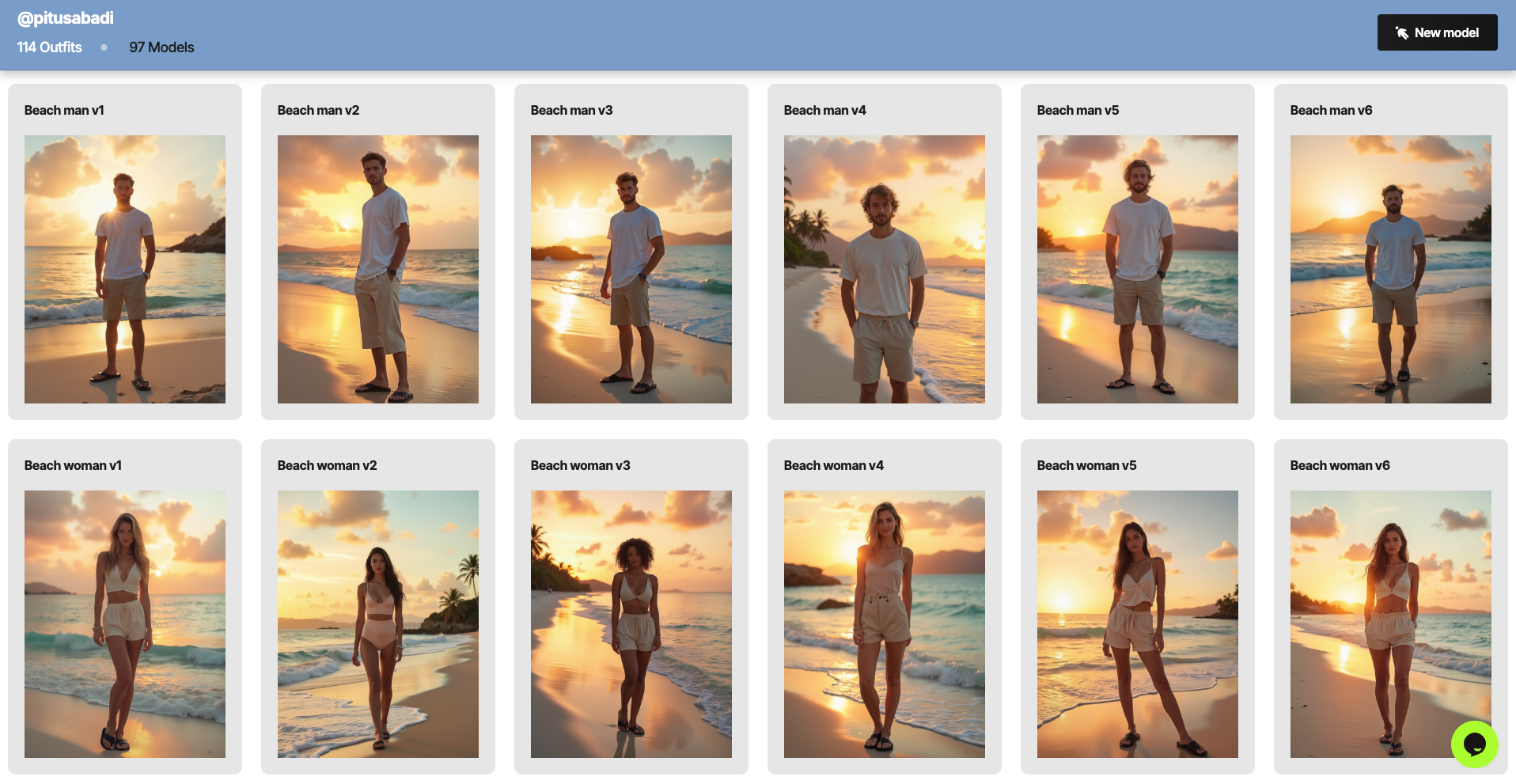
MyOutfits launches 300+ free models for fashion diversity
MyOutfits launches 300+ free models to democratize diversity in fashion.

Case Study: Flormar revolutionizes loyalty with AI
Flormar revolutionizes its loyalty with predictive AI and achieves a much higher average ticket.

High-Quality Product Descriptions with AI
Automate high-quality product descriptions with AI and multiply your productivity.
Don't miss the upcoming Pleasepoint events!
Join our events and discover the best AI use cases. Learn from experts, participate in live demos, and access success stories that will drive your business.
Amazon Web Services (AWS) Software Partners (ISV).
We are ISV (Independent Software Vendor) partners of Amazon Web Services (AWS) and have been selected for the ISV-Accelerate program.


"With Pleasepoint, we have moved from the traditional campaign management model to a more dynamic, segmented, and enriched customer model, personalizing CRM campaigns and improving the conversion of our e-commerce channel customers."
Josep Jarque
Digital Project Manager & IT Architect"The implementation of one-to-one personalization has allowed us to generate much more interesting content for users, as well as foster loyalty, improve the shopping experience, and generate additional sales through personalized recommendations."
Jose Antonio Linde
COO of Condisline"Throughout all these years of collaboration, we have closely witnessed the growth and evolution of the Pleasepoint platform. With predictive marketing, our results were very satisfactory. With one-to-one personalization, we have been able to enrich the information and design individual actions and offers. As a result, we are achieving greater customer retention and loyalty."
Alberto Elizondo
Digital Transformation at Real Sociedad"Working with Pleasepoint allows us to discover new customer purchasing behaviors, refine the implementation of campaigns based on their shopping journeys, and anticipate customer needs. Thanks to all this, we are improving personalization and enhancing the performance of our campaigns."
Belén Pérez Benavente
Customer Knowledge and Loyalty Manager at Norauto Spain"Pleasepoint has enabled us to take a leap in the analysis and segmentation of our customer base. Thanks to its personalization and predictive capabilities, we can now design more precise and efficient CRM campaigns based on purchasing behavior, optimizing our results, allowing us to innovate and add value."
Manuel Caamaño De Melo
Data Scientist at Norauto Spain"Thanks to Pleasepoint, our digital library is not only more intuitive and efficient, but also allows users to access relevant legal content with unparalleled speed and precision. This has transformed the way our clients interact with legal resources, offering a service that adapts to their needs almost naturally."
Òscar Gallud
CEO of Atelier LibrosOur clients vouch for us.













